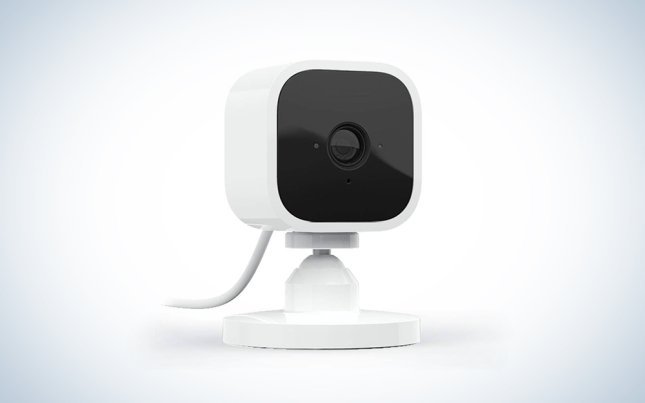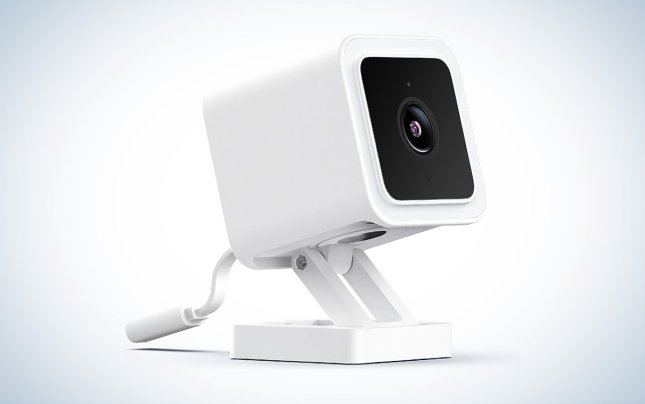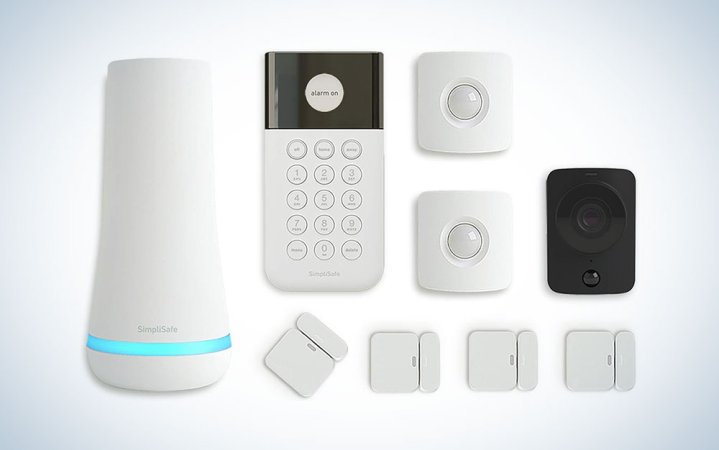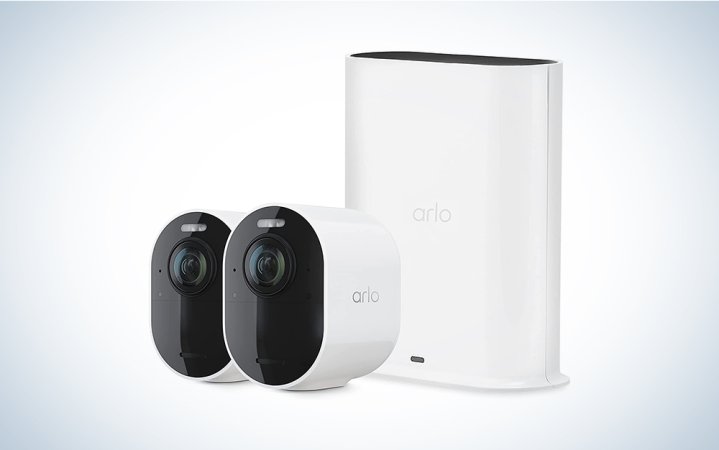We may earn revenue from the products available on this page and participate in affiliate programs. Learn more ›
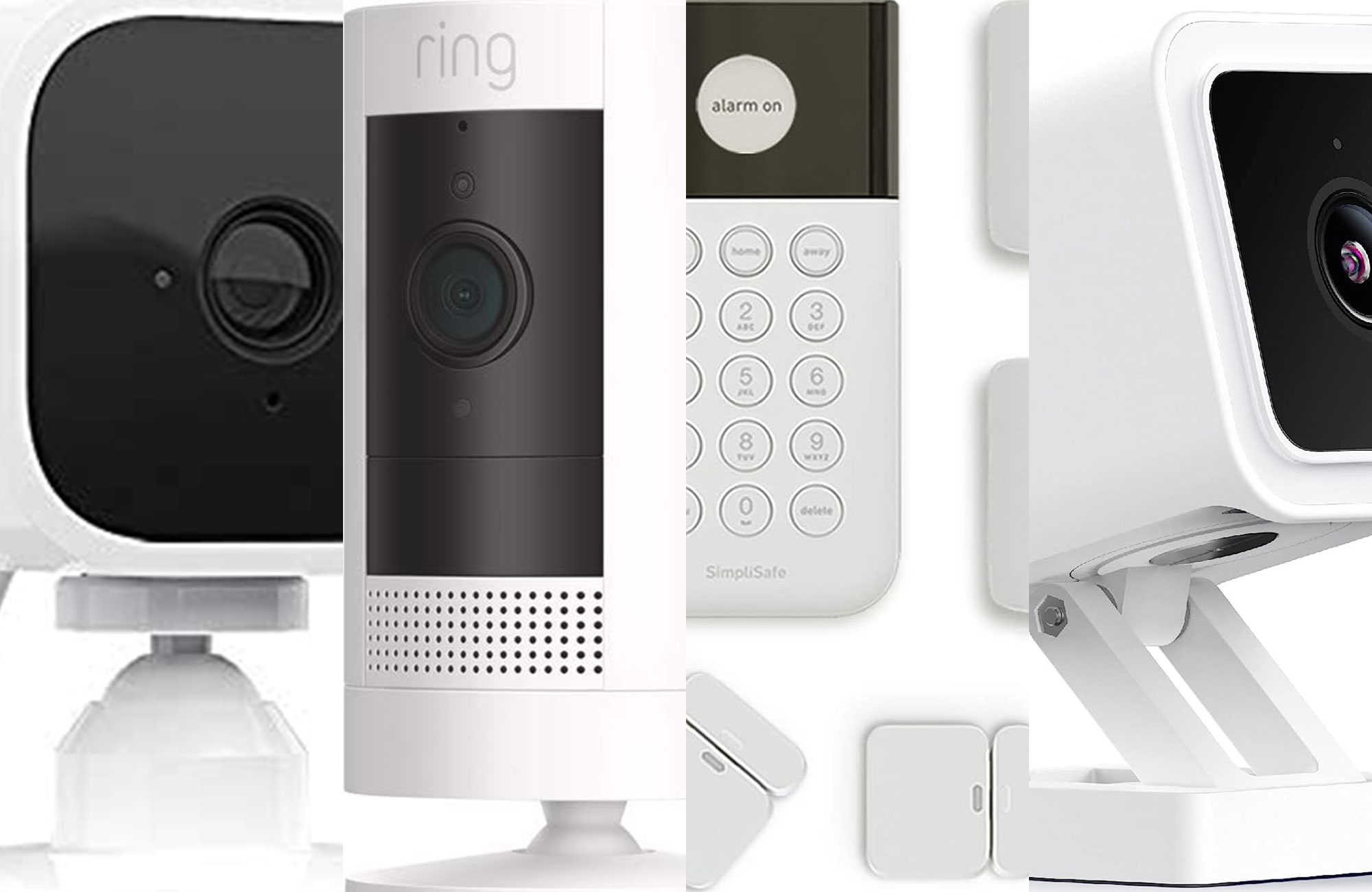
Indoor security cameras can be invaluable if you’re curious about what happens when you’re not home. How are your pets when it’s your day to go to work? Are the children revolting against the babysitter? You can ponder about it and give yourself a heart attack or simply set up a camera and see for yourself. We don’t think setting one up will reveal new horrors to you, but we do think you’ll have peace of mind knowing that you have an eye on your home when you’re not there. Extra features like motion detection, voice assistant compatibility, and cloud storage allow you to get the most out of your new indoor viewpoint. Ensure your house is a shenanigan-free place with the best indoor security cameras.
- Best overall: Blink Mini
- Best system: SimpliSafe 9 Piece Wireless Home Security System w/HD Camera
- Best 4K: Arlo Ultra 2
- Best wireless: Ring Stick Up Cam
- Best budget: WYZE Cam v3
How we chose the best indoor security cameras
I’ve previously written about the commercial security industry in a past life, so I know what features to look out for when purchasing a DIY model. I also edit/oversee the majority of smart home coverage here at the ye olde PopSci Gear desk (#subjectmatterexpert). To choose the best indoor security cameras, I looked at reviews, recommendations, did heavy research, and looked at past home security coverage for inspo.
The best indoor security cameras: Reviews & Recommendations
Some of these cameras do double duty and can work outdoors, but any of these models is made to keep a careful, watchful eye over your hearth and home.
Best overall: Blink Mini
Pros
- Two-way audio
- Day and night HD video
- Motion detection
Cons
- Needs more cameras for more comprehensive coverage
Specs
- Resolution: 1080p
- Power: Wired
- Viewing angle: 110 degrees diagonal
- Storage: Cloud storage
The Blink Mini is a practical, wired palm-sized cube packed with features outside its $35 price tag. If you want the most approachable way to get 1080p livestream video with infrared night vision into your Alexa-maintained (or IFTTT-automated) monitoring routine, this is the best minimalist model to pick. It’s incredibly compact and features motion detection and two-way audio. More cameras, restricted to available wall sockets, might be required for the most comprehensive, widescreen coverage, but it’s not a heavy lift at this price. It also doesn’t feature the same audio triggers as Ring devices and only saves clips to the cloud. If you’d like a device with a 360-degree view, consider the Blink Mini Pan-Tilt Camera.
Best system: SimpliSafe 9-Piece Wireless Home Security System w/HD Camera
Pros
- Lets you set up a whole security system right out of the box
- Outside cam has a very good quality video with 90 degrees field of view
- Easy to install and use
- Comes with a professional monitoring option
- Compatible with Amazon Alexa, Google Assistant
- Includes convenient magnetic mount
Cons
- Expensive
- Lacks support for HomeKit
Specs
- Resolution: 1080p
- Power: Rechargeable battery
- Viewing angle: 90 degrees
- Storage: Cloud storage only
If you’re looking to install an indoor security camera and a DIY home security system along with it, the SimpliSafe 9-Piece Wireless Home Security System might be your best bet. It’s pricey but far less expensive than buying the components individually. But even more importantly, it lets you set up a whole security system right out of the box.
The kit includes a 1080p camera, a base station, keypad, two motion sensors, and four entry sensors. All the components, including the cameras, connect to the base station, generating a loud siren to scare off intruders. Although the inside security camera isn’t the most robust model, the outside camera offers very good quality video with color night vision. What’s also nice is that the SimpliSafe mobile app (for iOS and Android) is nicely designed to let you effectively interact with your entire setup, and it comes with the option of including a professional monitoring system. However, for the price, it would be nice if both cameras had the option to store videos locally.
Best 4K: Arlo Ultra 2
Pros
- Compatible with major smart technologies
- Cloud subscriptions are relatively inexpensive
- Color night vision is very good
Cons
- Lacks support for HomeKit compatibility
- May not be as sturdy as other models
Specs
- Video resolution: 4K
- Power: Wireless
- Viewing angle: 180 degrees
- Storage: Cloud-based (via subscription); accepts microSD memory card for local storage (sold separately)
This wireless, weather-resistant security camera isn’t one of the cheapest on the market, but it captures excellent 4K video. It also provides you with the option of storing your videos in cloud storage or on local storage using a microSD memory card.
Two cameras are included in this bundle, and you can use them indoors and outdoors. You can see faces, license plates, and there’s even color night vision. WiFi isn’t required to use, thanks to the Arlo Smart Hub. A 180-degree field of view catches everything happening in the room. And, with an Arlo Secure Plan, you can receive notifications for people, vehicles, packages, or ward off unwanted indoor guests by triggering the siren.
Best wireless: Ring Stick Up Cam
Pros
- Robust app
- Lots of accessories and integrations
- Indoor- and outdoor-friendly
Cons
- Strategic placement is important
- Some features require Ring’s cloud plan
Specs
- Resolution: 1080p
- Power: Rechargeable battery
- Viewing angle: 130 degrees diagonal, 110 degrees horizontal, 57 degrees vertical
- Storage: Cloud (available with subscription)
When you hear the brand Ring, you may immediately think about doorbell cams, which is understandable. But this Ring is more versatile, at home on any flat surface or wall. This Ring Stick Up Cam Battery has 1080p video with a 110-degree horizontal/57-degree vertical field of view, so strategic placement is important. And some features require paying for Ring’s cloud plan, but it’s a quickly up-and-running value with a robust app, particularly great for folks who already have Alexa devices (Amazon now owns Ring). And, because it’s an Amazon product, there are copious accessories (such as solar panels) for those inclined to upgrade.
Best budget: WYZE Cam v3
Pros
- Two-way audio
- IP65 weather resistance
- Continuous recording with microSD card
Cons
- Lacks removable battery
Specs
- Resolution: 1080p
- Power: Wired
- Viewing angle: 130 degrees
- Storage: microSD card
While it won’t win awards for aesthetics (unless you have fond memories of playing with building blocks as a child), the WYZE Cam exceeds in inexpensive efficiency as long as you don’t mind dedicating some in-home space. The WYZE outdoor security camera is weather-resistant for deployment around your home (network) perimeter, but it’s also easily detachable with a “Travel Mode” that allows you to take the camera with you to record video directly to your phone without WiFi. There are sacrifices—like the lack of a removable battery, so you have to dismount the entire camera for charging—but it’s magnetically connected, so that’s just a simple twist.
What to consider when buying the best indoor security cameras
Easy-to-install indoor security cameras capture just “standard” HD all the way up to 4K, storing video locally or in the cloud, permanently or temporarily. Some are part of entire home security systems.
Wireless security cameras continue to evolve at a dizzying pace, with many models coming with better connectivity and cutting-edge technologies, such as artificial intelligence, to improve a host of features. However, if you’re new to these types of cameras, it can be confusing to figure out which features, specs, and capabilities are important for you and your home security cameras.
Here is what you should look for when you purchase an indoor security camera:
Video resolution and field of view
You’ll see 1080p, 2K, or 4K resolutions in indoor security cameras. A higher resolution means you’ll get a crisper image. It will also fill up your local or cloud storage faster. That’s a problem if your subscription plan or card has a fixed limit to its capacity. If you’re trying to balance subscription costs for cloud storage with what resolution you’ll need, consider how detailed of a picture you’ll need. If you need more detail, go with a higher resolution.
You’ll also want to check a security camera’s field of view specification, which is measured in degrees and tells you how much of a particular scene your security camera is capturing. The higher the FOV number indicates a wider lens and lets you see more of a particular scene in front of your house.
Power options and storage
When setting up a new indoor security camera, you must consider where to install it. If it’s a light bulb camera, it has obvious restrictions. But you can post the wireless, battery-powered models we recommend anywhere. Wired options, however, require a nearby outlet.
Most indoor security cameras store video in the cloud, which is convenient, but you’ll most often have to pay a fee to access them. So, if you don’t want to pay a fee for a cloud service, consider models that let you store them on a memory card.
Other features to look for
Many brands have introduced privacy features like two-factor authentication to ensure devices are not compromised or hacked. Many brands are also making security cameras that integrate with smart home features and connections to voice assistants like Amazon Alexa, Google Assistant, and others. Some brands even offer professional monitoring services for extra protection with a subscription.
FAQs
While there have been instances of hackers breaching security camera systems, that risk has pushed companies to roll out features like two-factor authentication, which uses unique codes to confirm the identity of anyone who attempts to access an account. In addition, password managers can help create and maintain long, randomly generated character strings to further reduce potential intrusions. If you follow good password protocols and cyber hygiene on both your camera and your WiFi network in general, WiFi security cameras are very safe.
Wireless security cameras are great if you don’t want to have to worry about placement, as you’re no longer tethered to power outlets and Ethernet cables. But the more you rely on wireless, the more you need to factor in the cost of WiFi reinforcement and cloud services. Also, many wireless cameras are magnetically mounted, so could be more easily stolen (taking previous footage with it if stored locally). Ultimately, each house’s infrastructure and your needs will determine the best means of installation.
You’ll need a wireless connection to access the internet if you have a camera that needs to store video footage in a cloud server (via a cloud subscription plan). However, several models can store video locally, on a memory card, hard drive, or other local storage. Additionally, some models use cellular data plans to store video footage.
Final thoughts on the best indoor security cameras
- Best overall: Blink Mini
- Best system: SimpliSafe 9 Piece Wireless Home Security System w/HD Camera
- Best 4K: Arlo Ultra 2
- Best wireless: Ring Stick Up Cam
- Best budget: WYZE Cam v3
You may not be able to have eyes in the back of your head, but you can have eyes in your own home. Look for an indoor security camera with a wide frame of view to capture it all, and consider wireless options so placement isn’t a problem. If you’d like to compile a highlight reel of all that’s happened in your home, you can take that video from the cloud or a microSD card and use some editing magic to make it happen. Regardless, you won’t need to sleep with one eye open. Or maybe you will, since you discovered what the dog does when you’re not around.
